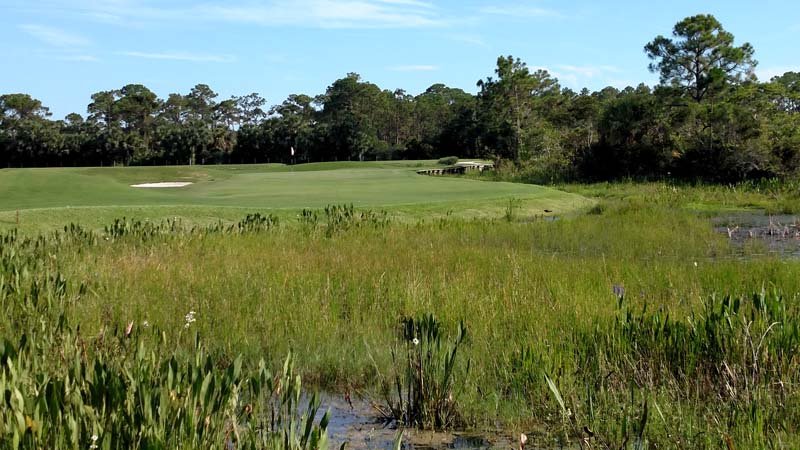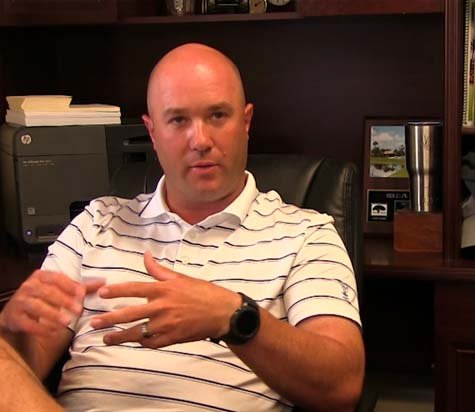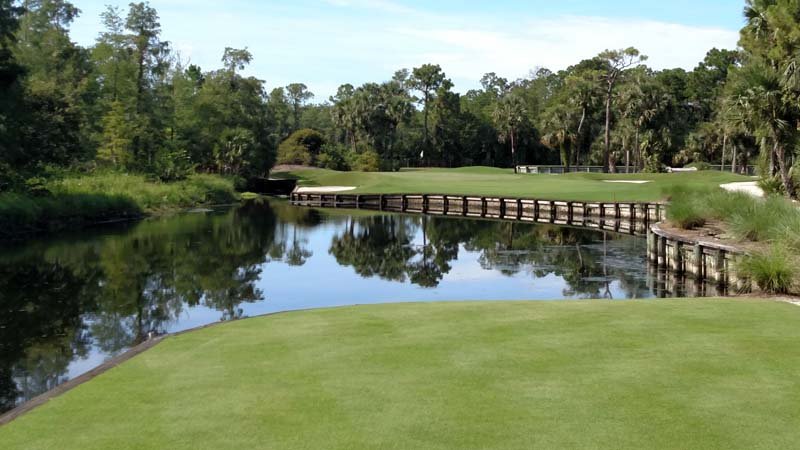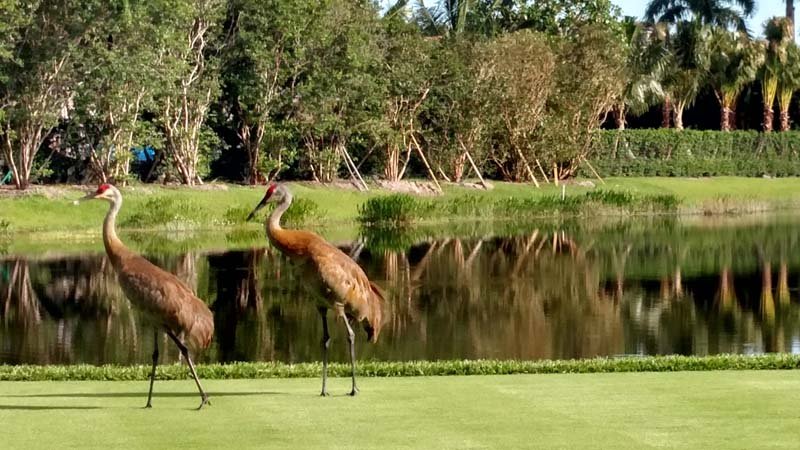
Pete Dye once described it as perhaps his finest-ever design. That's a good thing, because Old Marsh Golf Club in Palm Beach Gardens is, by many accounts, a one-of-a-kind golf course.
What Old Marsh is not is simply a golf course with a wetland surrounding it. What Old Marsh is, is a rustic 440-acre natural area that happens to have a 150-acre golf course in the middle of it. A really, really nice golf course.
"It's a spectacular golf course in the middle of a wildlife sanctuary," Dye once wrote in Florida Golf Magazine.
 Because it is surrounded by so much water off the golf course, managing the water on it has always been paramount. And making sure irrigation water and runoff do not travel off a golf course completely surrounded by water has been a challenge since Old Marsh opened in 1987. And the ability of superintendent Tony Nysse (pictured at right) and his predecessors to keep that water confined, is a big part of what makes the golf course so special.
Because it is surrounded by so much water off the golf course, managing the water on it has always been paramount. And making sure irrigation water and runoff do not travel off a golf course completely surrounded by water has been a challenge since Old Marsh opened in 1987. And the ability of superintendent Tony Nysse (pictured at right) and his predecessors to keep that water confined, is a big part of what makes the golf course so special.
Those wetlands surrounding Old Marsh on three sides dictated Dye's design plans 30 years ago, a 2016 renovation he presided over and pretty much everything Nysse and his team do on a daily basis today.
"We still meet with those government agencies about how water moves off this property and how it affects the preserve," said Nysse, who came to Old Marsh in 2015 after six years at Pine Tree Golf Club in Boynton Beach. "We make sure none of the water leaves this golf course."
Dye's vision perhaps never was tested as much as it was when he designed Old Marsh.
He built what is essentially a series of moats that separate marshland from fairways - just in case anyone had any thoughts on venturing into the wetlands. And fairway boundaries were built with waste areas in some places and a raised lip in others to keep errant golf balls, nutrient and pesticide runoff as well as irrigation water in the fairways. Because of that bathtub effect, all water filters to a drainage system that leads to the irrigation ponds, ensuring that everything that is supposed to stay on the golf course does just that.
It was a good thing Dye built this course when he did, because doing so in today's political and environmental climate likely would be impossible.

"This really was a unique project. When we were constructing the club, all the environmentalists and water agencies were out here, because it was a first-of-its-kind experience for them too," said Steve Ehrbrar, the grow-in superintendent at Old Marsh and now director of golf course operations at nearby Jupiter Hills. "What I remember is that Pete wanted to retain all the water on the golf course. This was the mid-1980s and even the environmentalists at the time said it was OK for some runoff to go into the wetlands, but Pete wanted to retain all the water. The outskirts were higher than the center of the fairways so runoff and surface water was contained. There was no agency then dictating that we do that. That was all the thought process of Pete Dye. You wonder now if another golf course could ever be built like that."
"We are told time and time again by government agencies that this property could never be built again," Nysse said. "They say it would not pass any sort of permitting process."
There is more water on and around Old Marsh than most golf courses, even those in Florida. Water and wetlands are in play on every hole, and the property abuts the even larger Loxahatchee Slough Natural Area. At nearly 13,000 acres, the Loxahatchee Slough is an environmentally sensitive, state wetland in north-central Palm Beach County that state and regional government agencies, including county authorities as well as the South Florida Water Management District, go to great lengths to protect from outside influences, like Old Marsh.
The golf course and surrounding areas abound with alligators, countless varieties of snakes, deer and bobcat just to name a few. Also at home here are hundreds of species of birds, all of which you will hear before reaching the second tee.
"We do nature walks in the winter, and we've been an Audubon Sanctuary for more than 20 years. We do everything we can to promote the habitat out here," Nysse said.
"This is tighter-run ship than anywhere else I've ever been because of how we manage the water."


